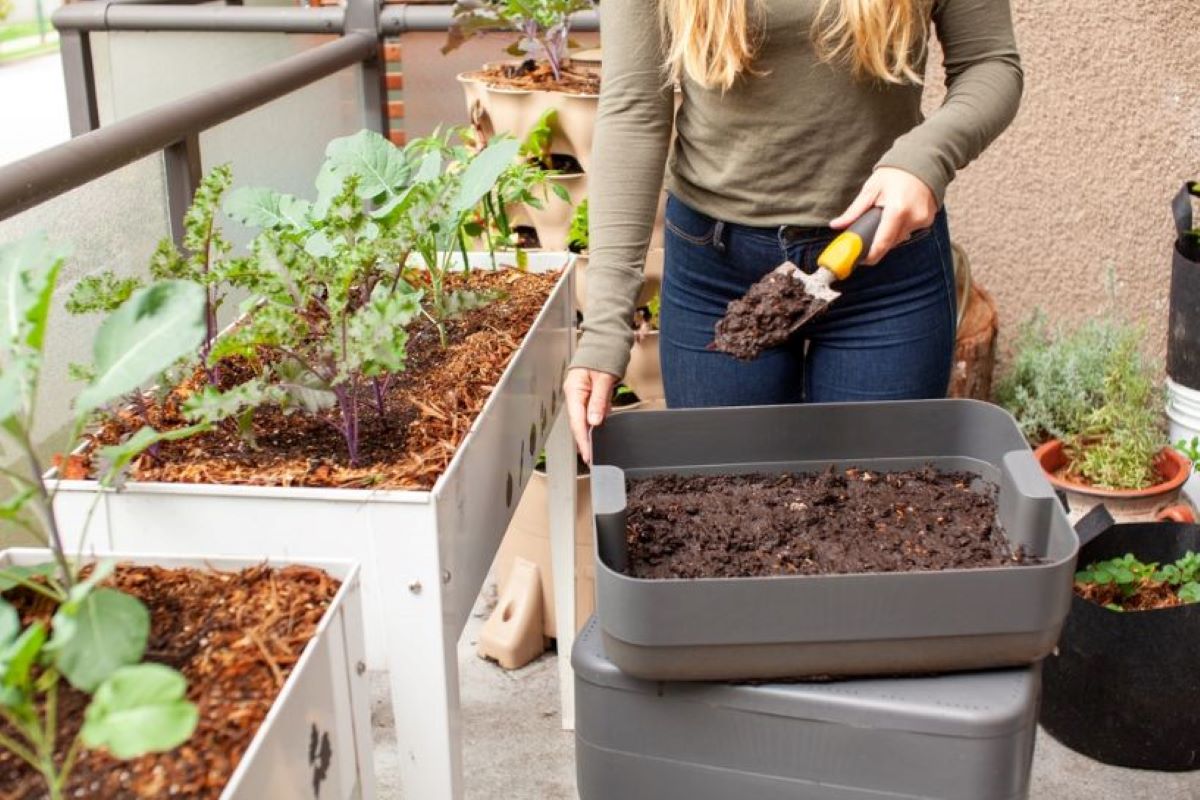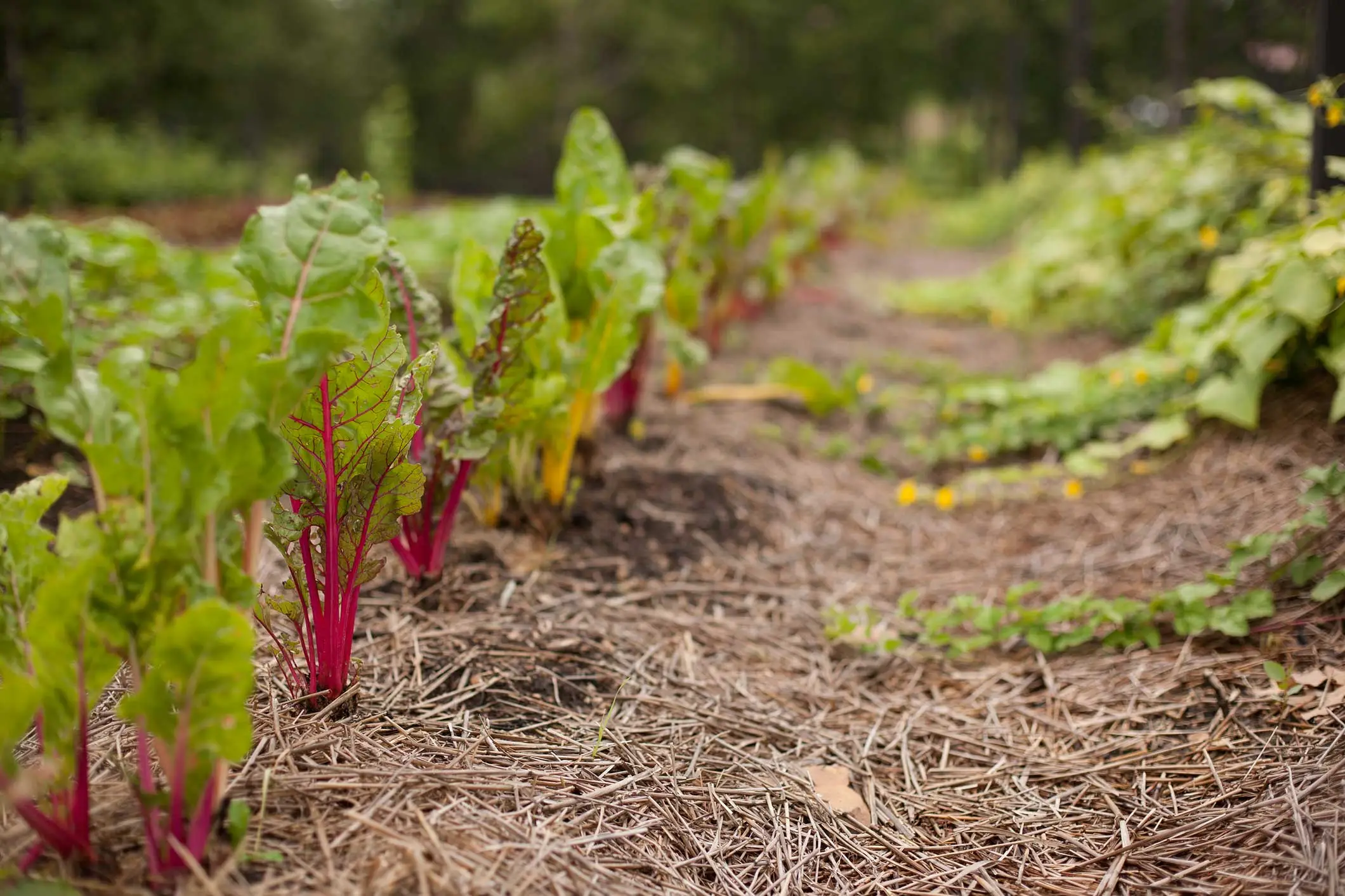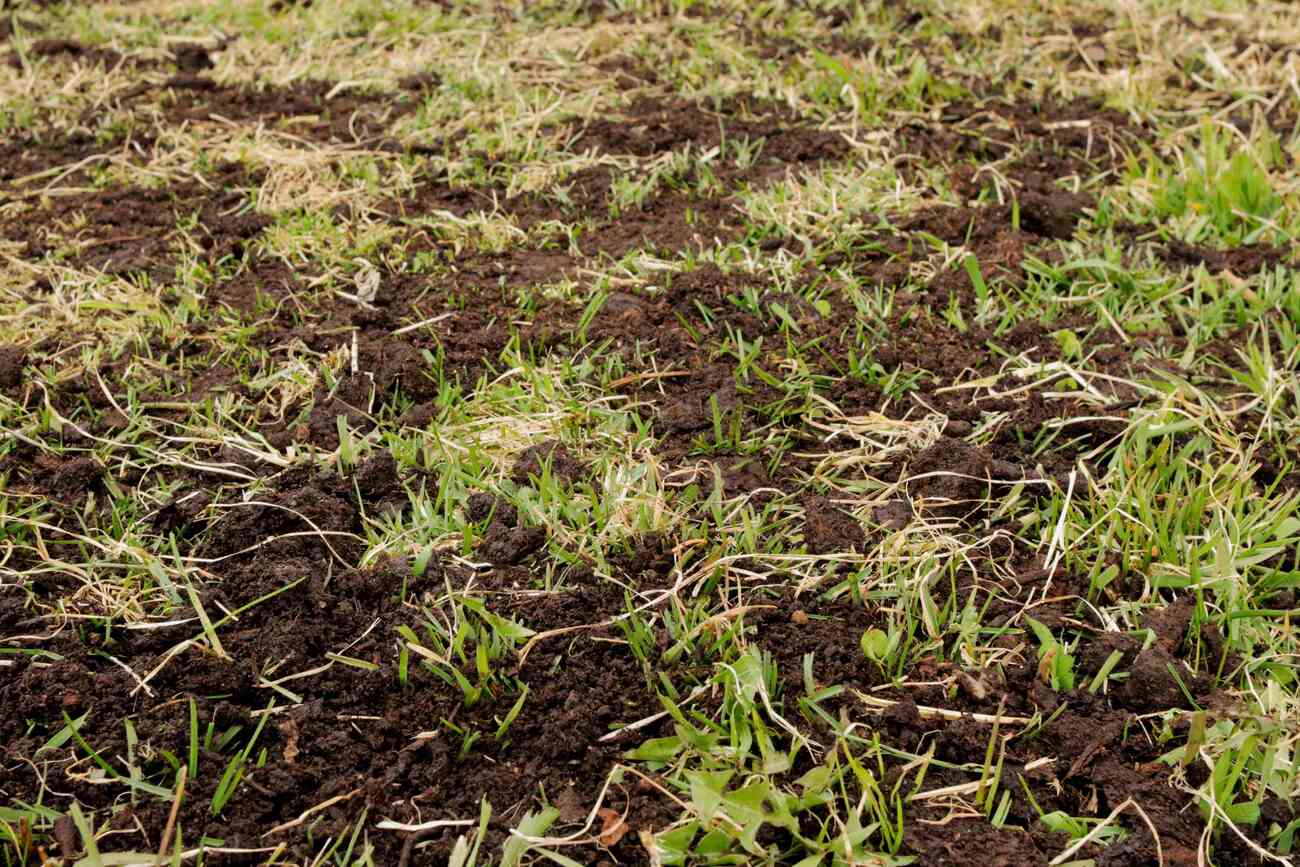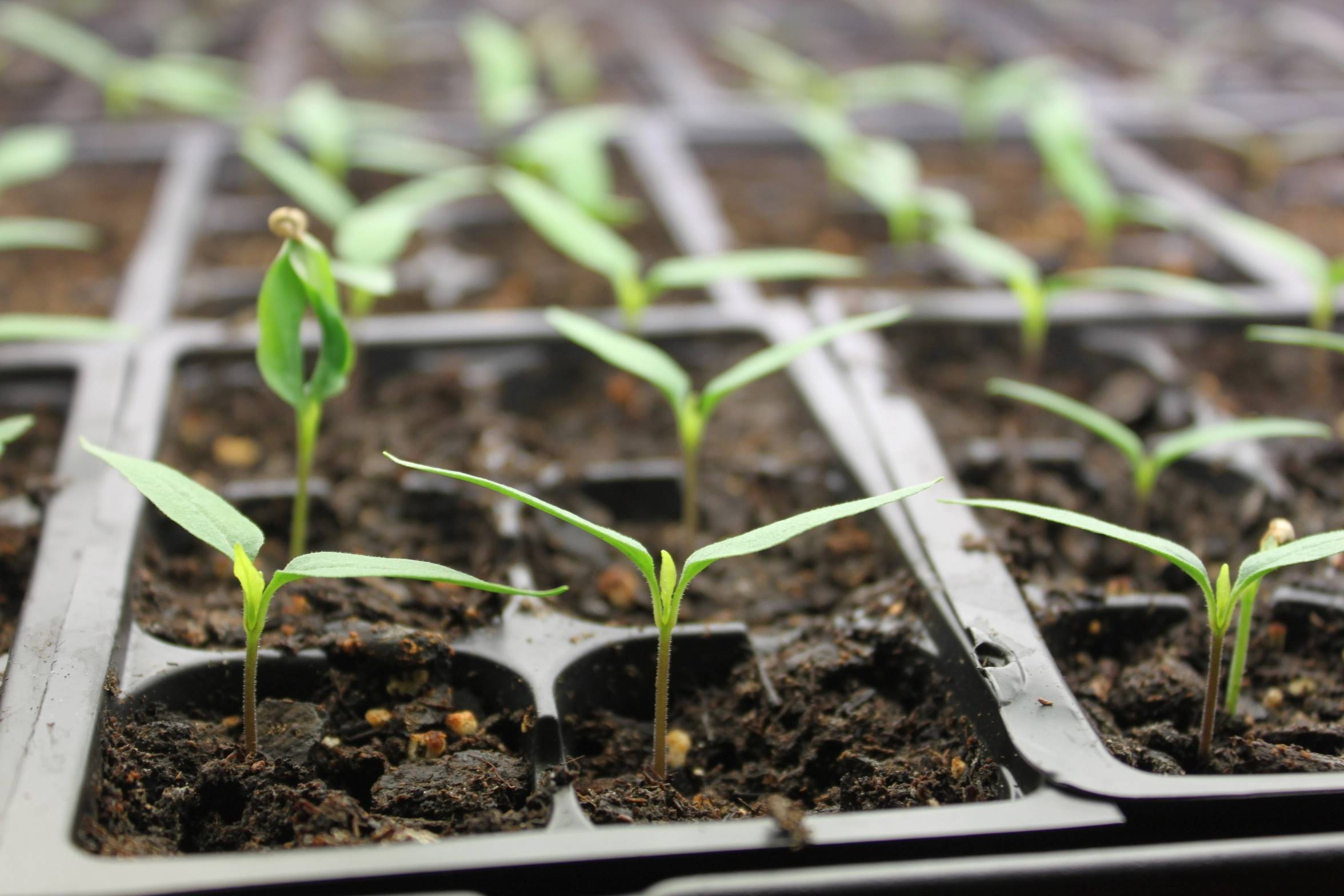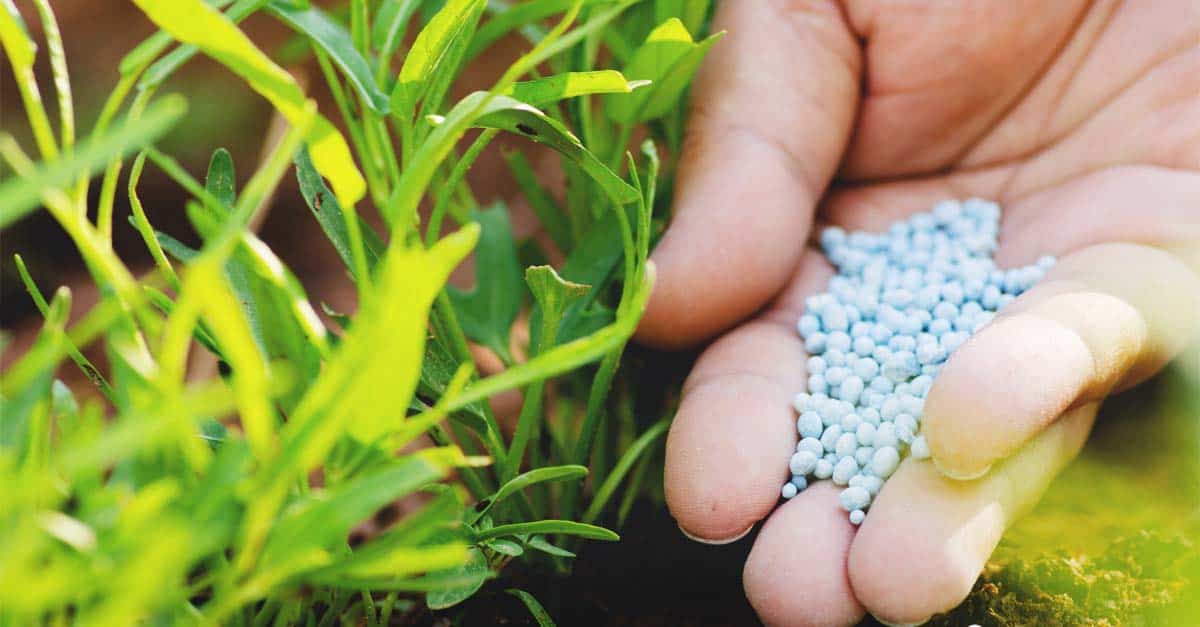Home>Gardening Tips and Tricks>When To Apply Fertilizer In Spring
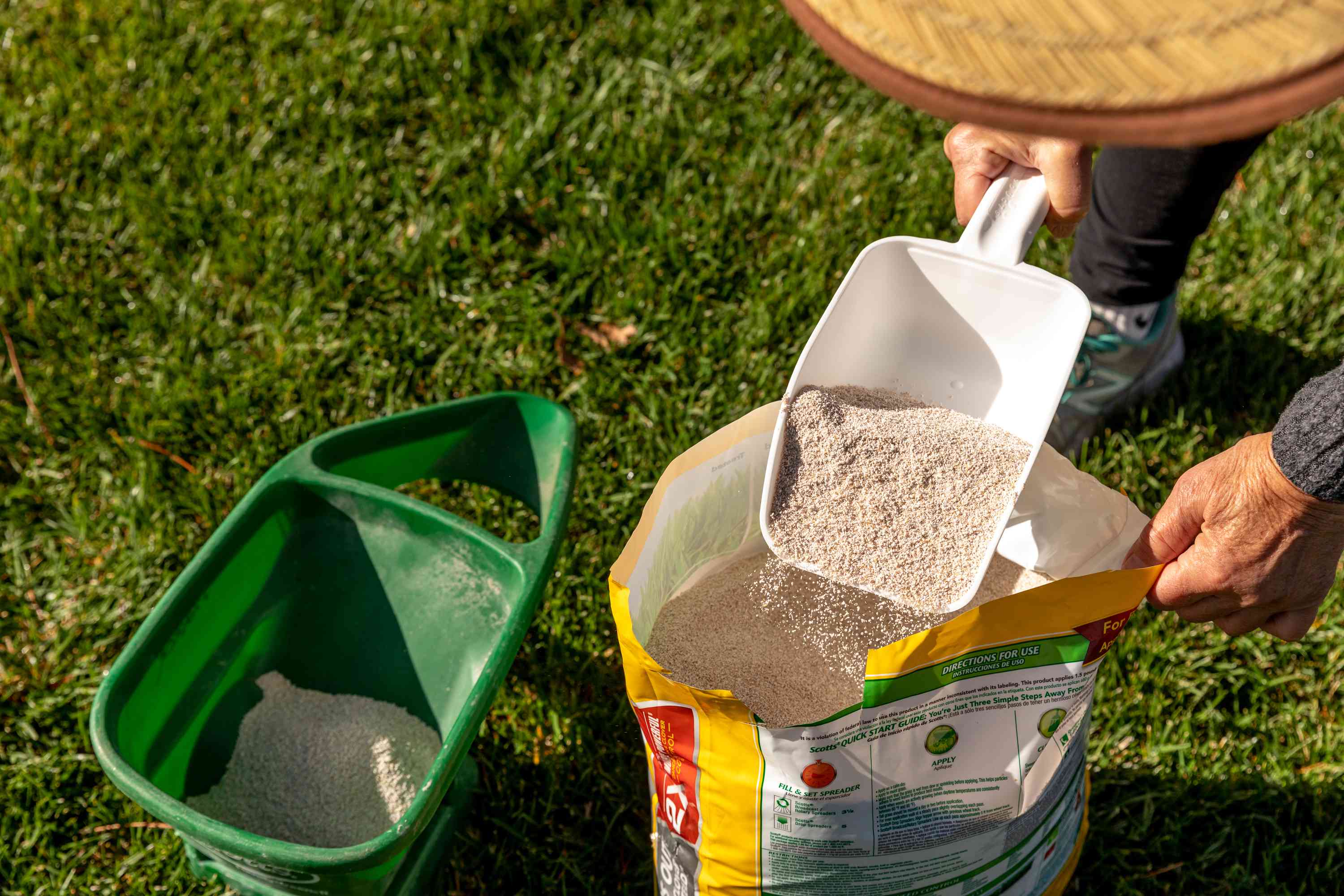

Gardening Tips and Tricks
When To Apply Fertilizer In Spring
Modified: January 22, 2024
Learn when to apply fertilizer in spring for effective problem solving and healthy plant growth. Expert tips and guidelines to maximize your garden's potential.
(Many of the links in this article redirect to a specific reviewed product. Your purchase of these products through affiliate links helps to generate commission for Chicagolandgardening.com, at no extra cost. Learn more)
Table of Contents
- Introduction
- Factors to Consider before Applying Fertilizer
- Soil Testing
- Weather Conditions
- Plant Growth Stage
- Types of Fertilizer to Use in Spring
- Nitrogen-Rich Fertilizers
- Phosphorus-Rich Fertilizers
- Potassium-Rich Fertilizers
- Organic Fertilizers
- Best Practices for Applying Fertilizer in Spring
- Calibrating the Spreader
- Applying the Fertilizer Properly
- Watering after Fertilization
- Common Mistakes to Avoid when Applying Fertilizer in Spring
- Conclusion
Introduction
As spring arrives, gardeners and homeowners alike anticipate the opportunity to revive their lawns and landscapes. One essential practice to ensure healthy plant growth is the application of fertilizer. Applying fertilizer in the spring provides plants with essential nutrients that they need for vigorous growth and development.
However, knowing the right time to apply fertilizer can be confusing. Factors such as soil condition, weather, and plant growth stage all play crucial roles in determining the optimal time for fertilization. This article will guide you on when to apply fertilizer in spring and provide tips for making the most of this important step in your gardening routine.
In order to maximize the benefits of fertilization, it is essential to consider a few key factors before applying fertilizer. Performing a soil test, assessing weather conditions, and taking into account the growth stage of your plants will help you make informed decisions about when and how to fertilize.
So, grab your gardening tools and read on to discover the best practices for applying fertilizer in spring. By following these guidelines, you can ensure a vibrant, thriving garden that will be the envy of the neighborhood.
Factors to Consider before Applying Fertilizer
Before reaching for the fertilizer spreader, it’s important to consider several factors that will determine the effectiveness of your fertilization efforts. By taking these factors into account, you can ensure that your plants receive the nutrients they need in the most optimal way.
Soil Testing: Conducting a soil test is an essential step before applying fertilizer. A soil test will provide valuable information about the nutrient levels in your soil, allowing you to determine which specific nutrients your plants may be lacking. This will help you select the appropriate type of fertilizer and avoid over-application, which can harm both plants and the environment.
Weather Conditions: Assessing weather conditions is crucial for successful fertilization. Ideally, choose a day when rain is not expected within the next 24 to 48 hours. Applying fertilizer just before heavy rainfall can wash away the nutrients and reduce their effectiveness. Additionally, avoid fertilizing on extremely hot days, as it can stress plants and burn the foliage.
Plant Growth Stage: Different plants have varying nutrient requirements at different stages of growth. Understanding the growth stage of your plants will help you determine the appropriate time to fertilize. For example, cool-season grasses may benefit from a light application of nitrogen-rich fertilizer in early spring to stimulate green-up, while flowering plants may require fertilization just before they enter the blooming stage to support flower production.
Types of Fertilizer to Use in Spring: Another crucial factor to consider is the type of fertilizer that best suits the needs of your plants. The three primary nutrients required by plants are nitrogen (N), phosphorus (P), and potassium (K), often referred to as NPK. Different fertilizers have varying ratios of these nutrients, so it’s important to choose one that aligns with the specific needs of your plants.
By carefully considering these factors, you can tailor your fertilization approach to provide the right nutrients at the right time, ensuring that your plants thrive throughout the spring and beyond.
Soil Testing
Before applying fertilizer, it’s essential to understand the nutrient composition of your soil. Soil testing is a valuable tool that provides insights into the pH level, nutrient levels, and overall health of your soil. Conducting a soil test is relatively simple and can be done by either using a DIY soil test kit or sending a sample to a professional soil testing laboratory.
Soil testing helps you to identify any nutrient deficiencies or excesses, which will guide you in choosing the appropriate fertilizer for your plants. The test will provide you with information on the levels of essential nutrients such as nitrogen (N), phosphorus (P), potassium (K), as well as secondary nutrients and micronutrients like calcium, magnesium, iron, and zinc.
Based on the test results, you can select a fertilizer that contains the specific nutrients required by your plants. For example, if the soil test reveals a deficiency in nitrogen, you can choose a fertilizer with a higher nitrogen content to supplement the soil. Conversely, if your soil is already high in phosphorus, you can opt for a fertilizer with a lower phosphorus content to avoid excessive levels, which can be detrimental to plant health and the surrounding environment.
Regular soil testing, preferably every 2-3 years, enables you to monitor the nutrient levels and make necessary adjustments to your fertilization routine. It helps you maintain the proper balance of nutrients in the soil, preventing under or over-fertilization, and ultimately promoting healthy plant growth.
Remember, soil testing is an important step in achieving a successful fertilization regimen. By understanding the nutrient composition of your soil, you can provide your plants with the precise nutrients they need, leading to stronger, greener plants and a more productive garden.
Weather Conditions
When it comes to applying fertilizer, paying attention to the weather conditions is crucial for its effectiveness. The weather can directly impact how the nutrients in the fertilizer interact with the plants and the surrounding soil. By considering the following weather conditions, you can ensure that your fertilization efforts yield optimal results.
Rainfall: Ideally, you should choose a day to fertilize when rain is not expected within the next 24 to 48 hours. Heavy rainfall immediately after fertilization can wash away the nutrients, reducing their effectiveness and potentially polluting nearby water sources. If rain is in the forecast, it’s best to delay the application until the weather clears up.
Temperature: Extreme temperatures, especially on hot days, can stress plants and potentially cause damage. It is generally advisable to avoid fertilizing on extremely hot days as the fertilizer can burn the foliage and roots. Instead, opt for cooler days or evenings when the temperature is more mild and favorable for plant growth.
Wind: Windy conditions can lead to uneven distribution of the fertilizer and cause it to drift away from the intended target. This can result in some areas receiving excess nutrients while others remain under-fertilized. To mitigate this, try to choose a calm day with minimal wind to ensure that the fertilizer is evenly spread and reaches the intended areas.
Drought: If your region is experiencing a drought or prolonged dry spell, it may not be the best time to fertilize. During drought conditions, plants may already be stressed due to lack of water, and applying fertilizer can further exacerbate their condition. It’s important to prioritize watering and providing adequate moisture to the plants before considering fertilization.
By considering the weather conditions, you can make informed decisions about when to apply fertilizer for optimal results. Choosing the right time ensures that the nutrients are effectively absorbed by the plants, promoting healthy growth and minimizing any negative environmental impacts.
Plant Growth Stage
Understanding the growth stage of your plants is essential when deciding the appropriate time to apply fertilizer. Different plants have varying nutrient requirements at different stages of their growth cycle. By considering the plant growth stage, you can ensure that you are providing the right nutrients at the right time, promoting optimal plant development.
Seedling Stage: During the seedling stage, plants focus on establishing their root systems and developing strong stems and leaves. It is generally recommended to avoid applying fertilizer during this stage. Young plants are delicate and can be easily damaged by excess nutrients. Instead, focus on providing the seedlings with proper watering and light until they are more established.
Vegetative Stage: Once the plants have developed a strong foundation, they enter the vegetative stage, where the focus shifts to leaf and stem growth. This is the ideal time to supply plants with nitrogen-rich fertilizer. Nitrogen promotes lush foliage growth and helps plants develop a strong and healthy structure. Apply a balanced fertilizer with higher nitrogen content to support vigorous vegetative growth.
Flowering Stage: As plants transition into the flowering stage, their nutrient requirements change. They require a balanced supply of nutrients, including phosphorus and potassium, to support flower production and enhance overall plant health. Phosphorus plays a vital role in flower development, while potassium aids in plant stress tolerance and disease resistance. Look for a fertilizer with a higher phosphorus and potassium content to meet the needs of flowering plants.
Fruit and Seed Development: If you have fruit-bearing plants or those that produce seeds, ensuring proper nutrient availability during the fruiting and seed development stage is crucial. Look for a fertilizer that provides a balanced ratio of nutrients, including phosphorus, potassium, and micronutrients. These nutrients aid in fruit and seed development, promoting healthier and more abundant crops.
By understanding the growth stage of your plants, you can tailor your fertilization approach to provide the specific nutrients they need at each stage. This ensures that your plants receive the right nourishment at the right time, leading to healthier, more productive, and aesthetically pleasing gardens.
Types of Fertilizer to Use in Spring
When it comes to choosing the right fertilizer for your spring gardening endeavors, it’s important to consider the specific nutrient needs of your plants. Different fertilizers contain varying ratios of essential nutrients, and understanding these ratios can help you provide the most suitable nourishment for your plants. Here are some common types of fertilizers used in spring:
Nitrogen-Rich Fertilizers: Nitrogen is an essential nutrient for promoting lush, green foliage growth. Nitrogen-rich fertilizers are commonly used in the spring to support the early development of plants. Look for fertilizers with a higher nitrogen content, such as those labeled with a higher N value in the NPK ratio (e.g., 10-0-0 or 20-5-5).
Phosphorus-Rich Fertilizers: Phosphorus is crucial for root development, flowering, and fruit production. Fertilizers with a higher phosphorus content are often recommended for promoting healthy root systems and encouraging abundant blossoms. Look for fertilizers labeled with a higher P value in the NPK ratio (e.g., 0-20-0 or 5-10-5).
Potassium-Rich Fertilizers: Potassium, also known as potash, plays a vital role in plant stress tolerance, disease resistance, and overall plant health. Fertilizers with a higher potassium content are beneficial for enhancing plant resilience and improving nutrient uptake. Look for fertilizers labeled with a higher K value in the NPK ratio (e.g., 0-0-20 or 5-5-10).
Organic Fertilizers: For those who prefer using organic methods, organic fertilizers offer a natural alternative. These fertilizers are derived from organic sources such as compost, manure, or bone meal. They release nutrients slowly, providing a steady and long-lasting supply of nourishment to plants. Organic fertilizers help improve soil structure, increase microbial activity, and contribute to long-term soil health.
Ultimately, the choice of fertilizer depends on the specific needs of your plants, as determined by factors such as soil testing and the growth stage of your plants. It’s important to read and follow the instructions on the fertilizer packaging to ensure proper application rates and avoid over-fertilization.
By selecting the appropriate type of fertilizer for your plants, you can provide them with the necessary nutrients for healthy growth, vibrant foliage, and bountiful blooms throughout the spring season.
Nitrogen-Rich Fertilizers
Nitrogen is a crucial nutrient for plant growth and development. It plays a vital role in promoting lush, green foliage and supporting healthy stem and leaf growth. Nitrogen-rich fertilizers are commonly used in the spring to provide plants with an extra boost during their early growth stages. Here’s what you need to know about nitrogen-rich fertilizers:
Benefits of Nitrogen: Nitrogen is essential for chlorophyll production, which is responsible for giving plants their green color. Adequate nitrogen levels help plants maintain strong and healthy leaves, ensuring efficient photosynthesis and nutrient absorption. Nitrogen also promotes the production of essential proteins and enzymes, enhancing various metabolic processes within the plant.
Types of Nitrogen-Rich Fertilizers: Nitrogen-rich fertilizers come in different forms, including synthetic and organic options. Some common types include ammonium nitrate, urea, ammonium sulfate, and blood meal. These fertilizers are typically labeled with a higher nitrogen content, such as 10-0-0 or 20-5-5, indicating the percentage by weight of nitrogen, phosphorus, and potassium in the fertilizer blend.
When to Use Nitrogen-Rich Fertilizers: Nitrogen-rich fertilizers are particularly beneficial during the early growth stages of plants. In the spring, as plants come out of dormancy and start actively growing, they require a sufficient supply of nitrogen to support the development of leafy foliage. Applying nitrogen-rich fertilizers at this time helps stimulate healthy growth and gives plants the best chance to establish a strong foundation.
Application Rates: It’s important to carefully follow the manufacturer’s instructions when applying nitrogen-rich fertilizers. The recommended application rates will vary depending on the specific product and the type of plants you are fertilizing. Over-application of nitrogen can lead to excessive foliage growth at the expense of other essential nutrients, and it can also contribute to environmental issues, such as nutrient runoff into water bodies. Always apply the fertilizer as directed to avoid these problems.
Timing of Application: To maximize the benefits of nitrogen-rich fertilizers, apply them when the soil temperature is consistently above 55 to 60 degrees Fahrenheit. This temperature range is ideal for optimal nutrient uptake by plants. Additionally, consider applying nitrogen fertilizer before rainfall or water the area well after application to ensure the nutrients are properly absorbed by the soil and taken up by the plants.
With their ability to promote healthy foliage growth, nitrogen-rich fertilizers are a valuable tool in a gardener’s arsenal. By providing plants with the necessary nitrogen, you can ensure vigorous growth, lush greenery, and overall plant health throughout the spring and beyond.
Phosphorus-Rich Fertilizers
Phosphorus is an essential nutrient for promoting root development, flowering, and fruit production in plants. Phosphorus-rich fertilizers are commonly used to supplement the soil’s phosphorus levels and ensure optimal plant growth. Here’s what you need to know about phosphorus-rich fertilizers:
Importance of Phosphorus: Phosphorus plays a critical role in energy transfer within plants. It is necessary for the formation of ATP (adenosine triphosphate), which is the energy currency that fuels various cellular processes. Phosphorus also supports root development, aiding in water and nutrient uptake, and plays a key role in flower and fruit production.
Types of Phosphorus-Rich Fertilizers: Phosphorus-rich fertilizers typically come in the form of phosphate compounds. The most common phosphate fertilizers include single superphosphate (0-20-0), triple superphosphate (0-46-0), and bone meal (4-12-0). These fertilizers contain high levels of phosphorus to address any deficiencies in the soil.
When to Use Phosphorus-Rich Fertilizers: Phosphorus-rich fertilizers are particularly beneficial during the early stages of plant growth and when plants are about to enter the flowering stage. Applying phosphorus-rich fertilizers at these critical times helps promote strong root development, which sets the foundation for healthy plant growth and enhances the plant’s ability to produce flowers and fruits.
Application Rates: It’s important to follow the instructions provided by the manufacturer when applying phosphorus-rich fertilizers. The recommended application rates vary based on the specific product and the needs of your plants. Avoid over-application, as excessive phosphorus levels can interfere with the uptake of other essential nutrients, leading to an imbalance in the soil and potentially harming plant health.
Timing of Application: Apply phosphorus-rich fertilizers during the initial stages of plant growth or shortly before flowering begins. This timing allows plants to establish a strong root system and ensures that they have ample phosphorus available when the flower buds form. Applying phosphorus-rich fertilizers too late in the season may not provide significant benefits, as the plants’ nutrient uptake and growth rate begin to slow down.
Organic Alternatives: If you prefer using organic fertilizers, consider using bone meal or rock phosphate. These organic alternatives are slow-release and provide a long-lasting source of phosphorus for plants. They also contribute to improving soil health and structure over time.
By incorporating phosphorus-rich fertilizers into your fertilizer regimen, you can provide plants with the essential nutrient they need for robust root development, vibrant blooms, and abundant harvests. Understanding the specific nutrient requirements of your plants and applying phosphorus-rich fertilizers at the appropriate time will help you achieve optimal results in your garden.
Potassium-Rich Fertilizers
Potassium, also known as potash, is an essential nutrient for plant growth and overall plant health. Potassium-rich fertilizers are commonly used to supplement soil potassium levels and ensure optimal plant development. Here is what you need to know about potassium-rich fertilizers:
Importance of Potassium: Potassium plays a vital role in various plant functions, including photosynthesis, enzyme activation, and osmoregulation. It helps plants regulate water usage, enhance nutrient uptake, and improve overall stress tolerance. Potassium also contributes to disease resistance, root development, and fruit quality.
Types of Potassium-Rich Fertilizers: Potassium-rich fertilizers are available in various forms, including potassium chloride, potassium sulfate, and potassium nitrate. These fertilizers are typically labeled with a higher potassium content compared to nitrogen and phosphorus. Look for fertilizers labeled with a higher K value in the NPK ratio (e.g., 0-0-20 or 5-5-10).
When to Use Potassium-Rich Fertilizers: Potassium-rich fertilizers are beneficial throughout the entire lifespan of plants. They are especially important during periods of increased stress, such as drought, excessive heat, or disease pressure. Applying potassium-rich fertilizers can help bolster plant resilience and improve their ability to withstand challenging conditions.
Application Rates: It’s crucial to follow the recommended application rates provided by the fertilizer manufacturer. Applying excessive amounts of potassium can hinder the uptake of other essential nutrients, leading to nutrient imbalances. As with all fertilizers, it’s essential to avoid over-application and follow the instructions to prevent environmental issues and potential harm to the plants.
Timing of Application: Apply potassium-rich fertilizers in the early stages of plant growth and throughout the growing season. Incorporating potassium at the beginning helps promote healthy root development, while consistent application during the growing season ensures a steady supply of this essential nutrient. Applying potassium before periods of stress, such as extreme heat or drought, is beneficial in supporting plants’ resilience.
Organic Alternatives: Organic options for potassium-rich fertilizers include wood ash, kelp meal, and compost. These organic fertilizers not only provide potassium but also contribute valuable trace minerals and organic matter to the soil, improving soil structure and overall soil health.
By using potassium-rich fertilizers, you can provide plants with the necessary nutrient to support their overall health, vigor, and ability to withstand stressful conditions. Understanding the specific nutrient needs of your plants and incorporating potassium-rich fertilizers into your feeding routine will promote optimal growth and yield in your garden.
Organic Fertilizers
Organic fertilizers are a popular choice for many gardeners who prefer to use natural and environmentally friendly methods to nourish their plants. These fertilizers are derived from natural sources such as compost, manure, bone meal, fish emulsion, and seaweed extract. Here are some key points to know about organic fertilizers:
Slow Release of Nutrients: Organic fertilizers release nutrients slowly over time, providing a steady and long-lasting supply of nourishment to plants. The gradual release helps prevent nutrient leaching and minimizes the risk of over-fertilization, allowing plants to absorb the nutrients at a steady pace and reducing the likelihood of nutrient imbalances.
Improvement of Soil Structure: Organic fertilizers contribute to improving soil structure and fertility. They add organic matter to the soil, enhancing its water-holding capacity, nutrient-retaining capacity, and overall texture. Organic matter also helps promote beneficial microbial activity in the soil, supporting healthy root development and nutrient cycling.
Enhancement of Soil Health: By using organic fertilizers, you are not only providing nutrients to your plants but also nourishing the entire soil ecosystem. Organic fertilizers promote the growth of beneficial microorganisms, which help break down organic matter and release nutrients in a form that is readily available to plants. This enhances the overall health and vitality of the soil, leading to strong, resilient, and productive plants.
Sustainability and Environmental Friendliness: Organic fertilizers are an eco-friendly choice as they are derived from natural and renewable sources. They help minimize synthetic chemical use and reduce the potential for harmful effects on the environment. Additionally, organic fertilizers promote soil sustainability by avoiding the depletion of valuable nutrients and reducing the risk of soil degradation.
Application Rates and Timing: It’s important to follow the recommended application rates provided by the manufacturer or the guidelines for homemade organic fertilizers. Applying organic fertilizers at the right time, such as during the early growth stages or before planting, ensures that plants receive the necessary nutrients when they need them most.
While organic fertilizers provide many benefits, it’s essential to note that they tend to have lower nutrient concentrations compared to synthetic fertilizers. Consequently, it may require larger quantities or more frequent applications to meet the nutrient requirements of plants. However, the long-term benefits to soil health and environmental sustainability make organic fertilizers a worthwhile choice for gardeners who prioritize organic and natural gardening practices.
Best Practices for Applying Fertilizer in Spring
Applying fertilizer correctly is essential to maximize its effectiveness and promote healthy plant growth. Here are some best practices to consider when applying fertilizer in the spring:
Calibrating the Spreader: It’s crucial to calibrate your fertilizer spreader to ensure accurate and even distribution of the fertilizer. Follow the manufacturer’s instructions to set the appropriate spreader settings based on the type of fertilizer and the recommended application rate. This ensures that the fertilizer is applied uniformly across the desired area.
Applying the Fertilizer Properly: Apply the fertilizer evenly by walking at a consistent pace, slightly overlapping each pass to avoid missed spots or over-application in certain areas. Be mindful of sensitive or non-target areas such as water bodies, sidewalks, and driveways to prevent fertilizer runoff or potential damage.
Watering after Fertilization: After applying the fertilizer, water the area lightly but thoroughly. This helps activate the fertilizer, allowing the nutrients to penetrate the soil and become available to the plants’ roots. Watering also helps prevent fertilizer burn and minimizes the risk of nutrient runoff.
Follow Application Timing: Apply the fertilizer at the appropriate time to maximize effectiveness. For most plants, springtime is an ideal time for fertilization when growth is actively occurring. Consider factors such as soil temperature, weather conditions, and plant growth stage to determine the optimal timing for applying the fertilizer.
Avoid Over-Fertilization: Over-application of fertilizers can have negative consequences for both plants and the environment. It can lead to nutrient imbalances, stunted growth, and increased vulnerability to pests and diseases. Always follow the recommended application rates provided by the manufacturer and avoid using more fertilizer than necessary.
Read and Follow Instructions: Read and carefully follow the instructions provided by the fertilizer manufacturer. These instructions will provide specific guidelines on how much fertilizer to apply, when to apply it, and any precautions or warnings. Adhering to these instructions will help you achieve the best results while ensuring the safety of your plants and the surrounding environment.
By following these best practices, you can ensure that your fertilizer application is effective, efficient, and environmentally responsible. Proper application techniques, adherence to recommended rates, and consideration of timing and watering will promote healthy plant growth and enable you to achieve the desired results in your gardening endeavors.
Calibrating the Spreader
Calibrating your fertilizer spreader is an important step in ensuring accurate and consistent application of fertilizer. It involves setting the spreader to deliver the correct amount of fertilizer per area, allowing for even distribution and preventing over or under-application. Here’s how to calibrate your spreader:
Read the Spreader Manual: Start by consulting the user manual provided with your spreader. It will provide specific instructions on how to calibrate your particular model. Familiarize yourself with the spreader’s features and settings before proceeding.
Choose the Right Fertilizer: Select the fertilizer you plan to use and note the recommended application rate. This information can usually be found on the fertilizer packaging or in the fertilizer guide. It will help determine the amount of fertilizer needed for calibration.
Measure Your Spreader’s Width: Measure the spreader’s width by conducting a test run on a known area and measuring the distance covered by the fertilizer spread. This will vary depending on the spreader’s design and settings.
Calculate the Application Rate: To determine the application rate, divide the recommended amount of fertilizer per area by the width of the spreader’s coverage. For example, if the recommended rate is 1 lb of fertilizer per 1000 square feet and the spreader covers a width of 6 feet, the application rate would be 1 lb/6000 square feet.
Test the Applicator: Conduct a test run by applying the calculated amount of fertilizer to a measured area. This could be a small section of your lawn or a marked-off area in a garden bed. Make sure to walk at a consistent pace and record the time taken to cover the measured area.
Adjust the Settings: If the test run reveals that too much or too little fertilizer was applied, adjust the spreader’s settings accordingly. This may involve changing the gate opening size or adjusting the speed at which you walk to ensure proper coverage.
Repeat the Calibration: Repeat the calibration process until you achieve the desired application rate and even coverage. It may take a few attempts to fine-tune the spreader settings to meet your specific needs.
Maintain Regular Calibration: It’s important to recalibrate the spreader whenever you switch to a different fertilizer or if you suspect any changes in the spreader’s performance. Regular calibration helps maintain accuracy and ensures consistent application of the right amount of fertilizer.
By calibrating your spreader, you can accurately deliver the correct amount of fertilizer, avoiding over or under-application. This precision allows for optimal nutrient distribution, promoting healthy plant growth, and ultimately leading to a thriving and vibrant garden.
Applying the Fertilizer Properly
Proper application of fertilizer is crucial to ensure that plants receive the necessary nutrients for healthy growth without causing harm. By following these guidelines, you can ensure that the fertilizer is applied effectively and evenly:
Read the Instructions: Start by carefully reading and understanding the instructions provided by the fertilizer manufacturer. Familiarize yourself with the recommended application rates, timing, and specific guidelines for your chosen fertilizer.
Wear Protective Gear: Before applying fertilizer, protect yourself by wearing gloves, long sleeves, and safety goggles. Some fertilizers may cause skin or eye irritation, so it’s essential to take appropriate precautions.
Check the Weather: Choose a day with calm weather conditions to prevent the fertilizer from being carried away by wind or washed away by rain. Avoid applying fertilizer during extremely hot or dry periods, as this can stress plants.
Prepare the Spreader: Calibrate your spreader, as discussed earlier, to ensure accurate and even distribution of the fertilizer. Adjust the spreader settings based on the specific instructions provided by the manufacturer and the desired application rate.
Apply in a Pattern: Begin applying the fertilizer by walking in a pattern to ensure even coverage. It’s recommended to walk at a steady pace and slightly overlap each pass to prevent skipped areas and ensure uniform distribution.
Maintain Consistent Speed: Keeping a consistent walking speed is important for ensuring an even application of the fertilizer. Walking too fast may result in a lighter application, while walking too slowly can cause over-application in certain areas. Take your time and maintain a steady pace for optimal coverage.
Avoid Overshooting: Be mindful of the spreader’s width and adjust your walking path accordingly. Avoid overshooting the intended target area, as this can result in excessive fertilizer application beyond the desired boundaries. Pay attention to nearby non-target areas, such as sidewalks or flower beds, to prevent fertilizer run-off and potential damage.
Clean Up Excess Fertilizer: After completing the fertilization process, clean up any excess fertilizer that may have spilled onto non-target areas. This helps prevent nutrient run-off and minimizes the risk of fertilizer reaching water bodies.
Store Fertilizer Properly: After use, store the fertilizer in a cool, dry place, away from children and pets. Ensure that the packaging is tightly sealed to maintain its effectiveness and prevent moisture contamination.
By following these tips, you can ensure that fertilizer is applied properly, minimizing the risk of uneven distribution or excessive application. This results in efficient nutrient uptake by plants, promoting healthy growth and enhancing the overall beauty and vitality of your garden.
Watering after Fertilization
Watering after fertilization is a crucial step to activate the fertilizer and ensure that the nutrients are effectively absorbed by plants. Proper watering helps distribute the nutrients throughout the soil, making them available to the plant roots. Here are some important considerations when it comes to watering after fertilization:
Timing: It’s best to water the area immediately after applying the fertilizer to facilitate nutrient uptake. This allows the fertilizer to dissolve and move into the root zone. Aim to water within the first 24-48 hours after application to prevent nutrient loss through evaporation or leaching.
Method: Use a gentle watering method to avoid disturbing the fertilizer granules or washing them away. A sprinkler, soaker hose, or watering can with a fine nozzle can work well for evenly distributing water over the area.
Depth: Water deeply enough to ensure the fertilizer reaches the root zone where plants can access it. The water should penetrate the soil to a depth of 6 to 8 inches, or the depth of the plant’s root system. This encourages the roots to grow deeper and access the nutrients more effectively.
Even Coverage: Ensure that the entire area where the fertilizer was applied receives sufficient water. Pay attention to any uneven spots or areas with dense vegetation that may prevent water from penetrating adequately. Proper coverage helps ensure consistent nutrient availability for all plants in the area.
Watering Frequency: Depending on the weather conditions and soil type, it may be necessary to water the area once or twice daily for several days after fertilization. This helps prevent the fertilizer from drying out and promotes thorough nutrient distribution. Adjust the frequency based on factors such as rainfall, temperature, and the specific needs of your plants.
Avoid Excessive Watering: While it is important to provide sufficient moisture, avoid overwatering as it can lead to nutrient leaching and runoff. Excessive watering can also waterlog the soil, depriving plant roots of oxygen and potentially causing root rot or other issues. Find the balance by monitoring soil moisture and adjusting watering accordingly.
Watering after fertilization ensures that the nutrients are activated, allowing plants to access them and promote healthy growth. It helps to distribute the fertilizer evenly, enhances nutrient absorption, and reduces the risk of nutrients being lost through runoff or evaporation. By following these watering guidelines, you can optimize the effectiveness of your fertilizer and support the vigor and vitality of your plants.
Common Mistakes to Avoid when Applying Fertilizer in Spring
When applying fertilizer in the spring, it’s important to be aware of common mistakes that can hinder the effectiveness of the fertilizer or even harm your plants. By avoiding these mistakes, you can ensure that your fertilization efforts yield the best results:
Over-Fertilization: One of the most common mistakes is applying too much fertilizer. Over-fertilization can lead to nutrient imbalances, burning of plant roots, and environmental issues. Always follow the recommended application rates provided by the fertilizer manufacturer to avoid these problems.
Poor Timing: Applying fertilizer at the wrong time can be detrimental to plant growth. Applying too early when plants are dormant may result in nutrient loss or inefficient uptake. On the other hand, applying too late in the season may not provide significant benefits as plants’ growth rate slows down. Consider the specific needs of your plants and the appropriate timing for fertilization.
Incorrect Nutrient Ratios: Different plants have varying nutrient requirements. Using a fertilizer with an incorrect nutrient ratio can lead to deficiencies or excesses. Before applying fertilizer, perform a soil test or consult a gardening professional to determine the specific nutrient needs of your plants and choose a fertilizer with the appropriate ratios.
Uneven Application: Unevenly applying fertilizer can result in uneven growth and nutrient deficiencies. Take your time to evenly distribute the fertilizer, walking at a consistent pace and overlapping each pass. This ensures that all plants receive an equal amount of nutrients for healthy and uniform growth.
Failure to Water After Application: Watering after fertilization is crucial to activate the fertilizer and ensure nutrient absorption. If you neglect to water the area after applying the fertilizer, the nutrients may not penetrate the soil or reach the plant roots effectively. Be sure to water the area thoroughly to promote nutrient uptake.
Ignoring Environmental Considerations: Neglecting environmental factors such as wind, temperature extremes, and rainfall can affect the efficiency of the fertilizer. Applying fertilizer on a windy day can result in uneven distribution, while fertilizing on extremely hot days can cause plant stress. Consider the weather conditions and adjust your fertilization plans accordingly.
Not Following Label Instructions: The fertilizer label contains vital information regarding application rates, timing, and safety precautions. Ignoring or failing to follow these instructions can result in ineffective fertilization or potential harm to plants and the environment. Always read and adhere to the instructions provided by the manufacturer.
By avoiding these common mistakes, you can ensure that your fertilization efforts are effective, efficient, and benefit your plants and the surrounding environment. Taking the time to apply fertilizer correctly and considering the specific needs of your plants will lead to healthier, more vibrant gardens and landscapes.
Conclusion
Applying fertilizer in the spring is a crucial step in promoting healthy plant growth and achieving vibrant, thriving gardens. By considering factors such as soil testing, weather conditions, and plant growth stage, gardeners can make informed decisions about when and how to apply fertilizer. It is important to select the appropriate type of fertilizer based on the specific nutrient needs of your plants, whether it be nitrogen-rich, phosphorus-rich, potassium-rich, or organic fertilizers.
By following best practices such as calibrating the spreader, applying fertilizer properly, watering after fertilization, and avoiding common mistakes, gardeners can maximize the effectiveness of their fertilization efforts. Calibrating the spreader ensures accurate and even distribution, while proper application techniques and adequate watering promote optimal nutrient uptake by plants. Additionally, avoiding common mistakes such as over-fertilization, poor timing, and uneven application helps maintain plant health and protects the environment.
Remember to always follow the instructions provided by the fertilizer manufacturer, consider the specific needs of your plants, and adhere to proper safety precautions. Regular soil testing and adjustment of fertilization practices over time will help maintain nutrient balance and prevent over-application.
By applying fertilizer correctly and considering the unique requirements of your garden, you can create an environment where plants can thrive and flourish. With the right nutrients provided at the right time, your garden will be a vibrant and bountiful sanctuary for you to enjoy throughout the spring and beyond.
